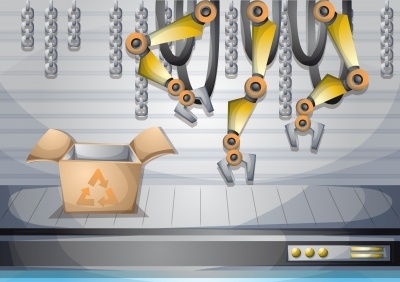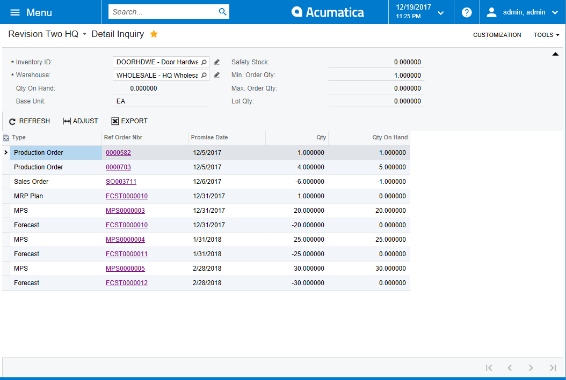Cloud Manufacturing Software – How to Apply Lean Manufacturing for Development, Engineering, Manufacturing and Aftermarket Stages
Successful manufacturing companies realize the importance of investing a portion of the R & D budget for continuous product innovation. For discrete manufacturers lean manufacturing is one innovative principle that is possible to apply to more than just product development. Lean manufacturing helps reduce costs and increase productivity with tools and processes to eliminate waste during the manufacturing process. This principle of streamlining and increasing efficiency is also the reason why manufacturers turn to cloud manufacturing software solutions.
Lean manufacturing is a time-tested approach for discrete manufacturers to facilitate market penetration and drive competitive advantage. In today’s competitive market it is important to maintain the delicate balance between time-cost-quality. Innovation helps optimize these triple constraints. In this article, we will explore how optimization is necessary at each stage of the product development including; concept development, engineering, manufacturing and after-market. Any time you find non-value added activities at each stage helps to minimize overhead and contributes to the optimization process.
Let’s review how applying lean manufacturing principles helps reduce waste in each stage of product development from concept to reality.
Download the infographic below: “Five ways to drive product cost optimization the ‘LEAN’ way”
In the concept development stage…
This early design phase has great influence on the product cost. In this concept stage, non-value added activities (NVAs) could rise from challenges like:
- Lack of understanding or insight into the customer defined values
- Lack streamlined communication
- Lack of access to the right resources at the right time
Each of the above points has a negative impact on the product features and performance. Insufficient or limited knowledge on any of the above results in developing products of compromised quality and substandard design. This means multiple reworks and prolonged schedules. It not only impacts the project delivery but also results in customer’s late entry to market, where they lose out on the first mover advantage.
Applying the lean manufacturing principles in concept development helps impact both the design as well as the process. Implementation of lean would mean cost effective, simplified and robust designs, optimized process through elimination of NVAs and open communication and better collaboration across teams.
In the engineering stage…
This stage clearly marks evolution of the product from concept to prototype. This essentially tests the feasibility of the concept design to be manufactured into a commercially viable product. It takes into account various factors and the associated risks. The overall aim of this phase is to minimize the technical risks associated with developing and manufacturing the product.
However, various factors could amount to a lot of NVAs that further the risk, such as:
- Complex product design and custom or redundant parts
- Lack of standardization in parts and process
- Lack of continuity in information flow
- Lack of cross functional communication
- Multiple data platforms and unnecessary data conversion
LEAN implementation in the engineering stage would mean usage of modular and standard parts to reduce design complexity, enable reuse, identifying failure risks and modifying design for profitable manufacturing and optimized costs. Standardization of process, data, tools and a common standardized channel for procuring product information would ensure streamlined communication and effective collaboration between engineering and manufacturing; reducing risks and failure.
In the manufacturing stage…
This is the final stage before a product reaches the market. The agility, efficiency and productivity of this stage contribute to the cost, time to market, quality and competitive advantage of a product. In order to optimize manufacturing, the following wastes need to be checked and prevented from amounting to NVAs
- Incompatible design for manufacturing
- Failure to estimate the quantity and over production
- Multiple vendors and lack of supplier collaboration
- Lack of standard process
- Lack of communication
Implementing LEAN principles in manufacturing has been one of the most profitable and proven strategies for optimizing costs and resources. Lean manufacturing identifies the wastes in the manufacturing process and enables optimization. It minimizes inventory, improves agility, and enables better collaboration in supply chain, thereby resulting in supply chain optimization. This keeps the manufacturing costs which in turn facilitates competitive pricing.
In the aftermarket stage...
Today, this stage witnesses competition never seen before. The rise of breakthrough technology and globalization has turned the aftermarket space into a battle ground. Cost effective and efficient after-market strategies translate to huge profits and revenue growth for manufacturers. The factors that can lead to NVAs could be:
- Lack of effective supplier collaboration
- Lack of efficient/proactive failure detection mechanism
- Lack of serviceability
LEAN implementation at this stage would build a holistic system that enables an efficient service model through agility and improved communication, builds customer satisfaction by providing better service quality and keeps the costs in check through effective distribution.
So, LEAN is no longer limited just to the manufacturing stage and the principles are finding new buyers in various stages of product development.
Manufacturers who implement cloud systems allow them to leverage the benefits across all departments. The cloud is here to stay, embrace it and use it to gain your competitive advantage.
Barry-Wehmiller International offers several solutions in a cloud delivery model such as ERP, CRM, PLM, ecommerce and SharePoint solutions.
READ our Manufacturing Pulse Newsletter
Barry-Wehmiller International (B-WI)
Barry-Wehmiller International (B-WI) is a global provider of business and technology solutions to the mid-market manufacturing domain. Our unique business model enables us to offer global competence in consultative services while having a strong local presence in the markets we serve. With operations strategically located to meet client needs throughout the U.S., Europe, the Middle East and Asia Pacific, B-WI offers world-class engineering, enterprise, IT and application managed services (AMS) solutions that enable its clients to achieve a competitive edge in their marketplace. Our global headquarters is in Atlanta, GA with additional offices in North America, Europe and India.
Call for a free consultation - 404-476-4476.
By Pratistha Suhasini
Related article published on ERPVAR:
Another version of this blog was published on August 4, 2016 in B-WI’s Manufacturing Pulse Blog by Pratistha Suhasini - Should LEAN Principles Just Be Limited to the Manufacturing Phase?




